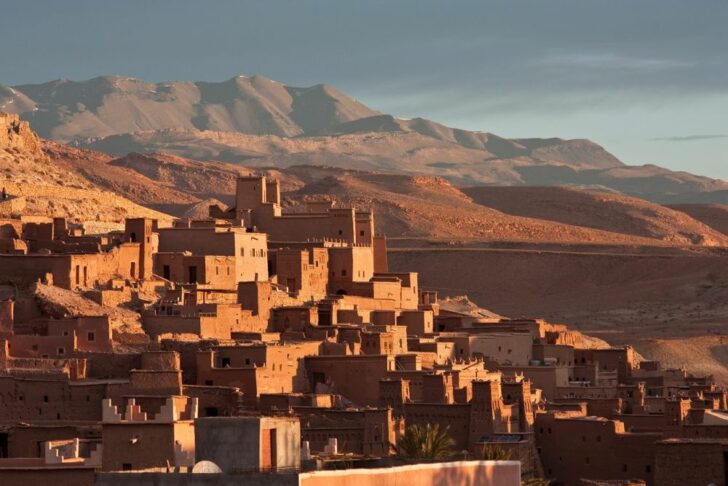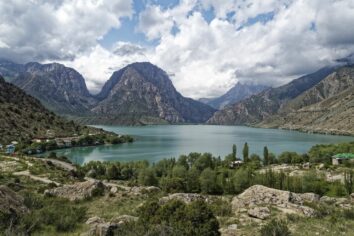Sahara The Majestic Desert of Africa

Introduction:
The Sahara Desert, commonly known as the Sahara, is the largest hot desert on Earth, covering vast regions of Northern Africa. Stretching over 9.2 million square kilometers, it is almost the size of the United States and comprises around 25% of the African continent. With its mesmerizing golden sand dunes, ancient oases, and diverse ecosystems, the Sahara attracts travelers and adventure enthusiasts from all over the world. In this article, we will delve into the wonders of the Sahara, exploring its history, geographical features, and the significance it holds for those who seek to uncover its secrets.
The Evolution of Sahara over Time:

The Sahara Desert has not always been the arid expanse we see today. Geological evidence suggests that millions of years ago, the region was once a fertile land filled with lush vegetation and various wildlife. However, due to natural climate variability, the region gradually transformed into the desert we know today. The formation of the Sahara can be attributed to various factors, such as changes in Earth’s tilt, oceanic currents, and natural processes like desertification.
Historical Significance:
The Sahara holds immense historical significance, acting as a bridge between various civilizations throughout time. Many ancient cultures, such as the Egyptians, Berbers, and Phoenicians, flourished in the Sahara, leaving behind a rich cultural heritage. The region also played a vital role in trade routes, connecting North Africa to the Mediterranean, Sub-Saharan Africa, and the Middle East. The archaeological sites in the Sahara bear witness to the illustrious past of these civilizations and provide glimpses into their way of life.
Geographical Features and Biodiversity:
The Sahara is a stunning tapestry of diverse geographical features. From towering sand dunes to rocky plateaus, the landscape is a testament to the forces of nature. The renowned Erg Chebbi and Erg Chigaga dunes are among the Sahara’s most iconic attractions, offering breathtaking vistas during sunrise and sunset. Additionally, the Tassili n’Ajjer mountain range and the Ahaggar Mountains provide contrasting views, with their rugged peaks and jagged cliffs.
While the Sahara may seem barren at first glance, it is home to various plant and animal species that have uniquely adapted to survive in this harsh environment. The Saharan flora includes hardy shrubs, cacti, and succulents, enabling them to withstand extreme temperatures and scarce water resources. Similarly, the Sahara hosts an array of wildlife, such as the dromedary camel, fennec fox, and addax antelope, all equipped with special adaptations to thrive in the desert.
The People of the Sahara:
The Sahara is also home to diverse ethnic groups, with the Tuareg, Berbers, and Bedouins being the most prominent. These indigenous communities have developed a deep understanding of the desert’s dynamics and have forged a unique culture closely tied to the Sahara’s natural resources. Their nomadic lifestyle and intricate knowledge of navigation and survival have allowed them to traverse the vast expanses of the desert for centuries.
Exploring the Sahara:
For adventurous souls, the Sahara offers a multitude of thrilling experiences. From camel trekking across the dunes to camping under the star-studded night sky, the desert provides an unparalleled sense of tranquility and awe-inspiring beauty. Travelers can also visit ancient desert towns like Timbuktu and Siwa Oasis, where they can immerse themselves in the rich local traditions and marvel at the architectural wonders.
[INSERT VIDEO HERE]
Conclusion:
The Sahara, with its mystique and grandeur, continues to captivate the imagination of wanderers and nature enthusiasts. Its vastness and untamed landscapes hold secrets from the past and offer unique experiences to those who dare to venture into its embrace. Whether it is discovering the historical remnants, marveling at Mother Nature’s artistry, or uncovering the cultural richness of the people, a journey to the Sahara promises an unforgettable expedition filled with remarkable moments and awe-inspiring beauty. The Sahara truly stands as a testament to the wonders this planet has to offer.
FAQ
What is the size of the Sahara Desert?
How did the Sahara Desert form?
What are some of the notable geographical features in the Sahara?
Flere Nyheder
Rejse Bali – Oplev Paradiset på Jorden
Introduction: The Sahara Desert, commonly known as the Sahara, is the largest hot desert on Earth, covering vast regions of Northern Africa. Stretching over 9.2 million square kilometers, it is almost the size of the United States and comprises aroun...
18 januar 2024
Filippinerne rejse: Oplev paradisets skønhed og kultur
Introduction: The Sahara Desert, commonly known as the Sahara, is the largest hot desert on Earth, covering vast regions of Northern Africa. Stretching over 9.2 million square kilometers, it is almost the size of the United States and comprises aroun...
18 januar 2024
Thailand Rejse: Oplev Det Ultimative Paradis
Introduction: The Sahara Desert, commonly known as the Sahara, is the largest hot desert on Earth, covering vast regions of Northern Africa. Stretching over 9.2 million square kilometers, it is almost the size of the United States and comprises aroun...
18 januar 2024











